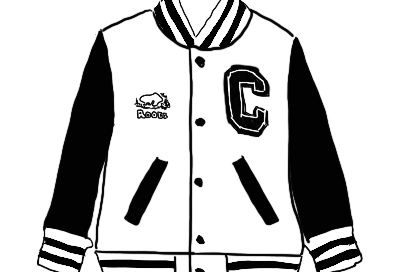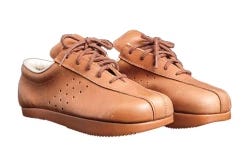It’s been a great week for new readers! Welcome! Now that you found us, we hope you stay. We’re always looking for great reccos on what we should “Consider” next. Coming up in the next few weeks are wagons, cutting boards, and maybe even the European obsession with asparagus.
A while ago, I was having a great chat with Considered reader Sarah. She was sharing some feedback and said she loved our time sensitive pieces. Back in February with spring around the corner, I wanted to dig into the world of weather predicting groundhogs (Pauxatawney Phil, Wiarton Willie, etc). Turns out it is a dark world of intrigue, scandal and dead groundhogs so I decided to swerve and dig into another seasonal topic… light outerwear.
Heritage brands are almost clichéd. Stories of “decades of craftsmanship” and “only the finest materials” abound on the internet. Someday we will get to some of the incredible stories behind brands like Bruno Cucinelli and his philosophy of “humanistic capitalism,” which he embodies through his factories in Solomeo, but today we’re diving into a brand a bit more local (to us in Canada).

Through my professional life, as Managing Partner at Faculty of Change, I was introduced to some of the exciting work going on at Roots, a Canadian outdoors clothing brand. Note: this post is not sponsored content in any way.
Roots was started in 1973 by Michael Budman and Don Green to encapsulate their views of the Canadian wilderness and Algonquin summer camp aesthetic. While their sweats, Olympic wear and camp socks are how most people recognize the brand, we are going to cover their leather goods and how a leather factory established in 1973 has created the iconic Roots Award Jacket, seen on celebrities, athletes, politicians and everyday folks.

Design
Do not let the wilderness aesthetic of Roots fool you into thinking that Budman and Green were lumberjack outdoorsmen. Born in Detroit, they had a very global outlook. In addition to Roots, they published an influential English language magazine about life in Paris calledParis Passion. It showcased an eclectic set of creative talents, featuring early work from the likes of BHL to Helmut Newton and Patricia Marx.
The pair were inspired by a popular shoe called the Kelso Earth Shoe, which featured a lower heel than toe. This “negative heel” was thought to have posture benefits. Most shoes are actually higher in the heel than the toe. Budman and Green went through the phone book to find a local shoemaker that could manufacture their designs and discovered the Kowaleski family, who have been the backbone of their leather production ever since.
In 1979 the brand introduced the Award Jacket, their take on the high school athlete letterman coats. “Lettering” is a tradition that dates back to 1865, where athletes who participate in a certain amount of sporting contests on behalf of their school would receive a chenille fabric (French for caterpillar, which its texture resembles) letter patch that they would put on their jackets, leading to the popularization of Letter Jackets. So why did Roots do a letterman jacket? They were inspired by athletes and the communities built around collegiate athletics. Think of it as an early foray into athleisure or maybe a kind of sport-core.
Innovation
While other Roots products are manufactured all over the world, their premium leather products have continuously been manufactured at their Toronto factory under the stewardship of the Kowaleski family. Each of the Award Jackets is handcrafted in Toronto from melton wool and leather from tanneries that supply companies like Hermes and others. It is incredible that a mall brand has their own atelier, equivalent to any great fashion house.
This manufacturing flexibility allows for customers to make customized jackets and for the brand to partner with others (like Drake’s OVO brand or Marvel comics) to support limited runs. Roots Award Jackets were popular gifts to celebrities who attended the Toronto International Film Festival, and even a cursory google will uncover amazing photos of 90s celebrities flexing their Roots coats. One of the “grail” awards jacket are the jackets Roots made for the Jamaican bobsled team and that were reproduced for the cast of Cool Runnings.
Having this kind of product/manufacturing expertise strikes a personal note for me. Growing up, my grandfather ran a ladies coats and suits manufacturing business at the corner of Spadina and Adelaide in Toronto, where he also sold coats out of the factory showroom. Most Canadian apparel factories have closed up or currently only do piece work for larger companies like Canada Goose. It makes sense. With globalization there are benefits to regions developing expertise reflective of their natural advantages. But it does make you wonder how companies can integrate product construction in their DNA when the factory making the product is thousands of miles away.
Value
The Award Jacket currently retails for $598 CAD with a custom version starting at $528. The jacket has been in continuous production, using the same materials and commitment to craft for almost 40 years. As such, there is a robust resale market. A search on eBay had a host of coats from $100 to $900 for the limited edition Drake collaboration. Sites like Grailed and Kijiji also had a number of examples. Searching “Roots Jacket” will give you more results than “Roots Award Jacket.”
Considered tip: If anyone lists something under its proper full name, they have a better sense of how much an item is worth. “Artemide Lamp'' or even “cool lamp”' will get you cheaper listings than “Artemide Tolemo Mini LED Lamp.” Broadening up the search terms will get you a better value but require flipping through more pages. But isn’t the real “award” the jackets you met along the way?
PS
We can not talk about Roots without talking about their METEORIC fits for the Canadian and US Olympic teams. Roots outfitted Team Canada from 1998 until Turin in 2006. They also outfitted the US team from 2002-2006. They shocked the world with their commitments to some very unique hat silhouettes (pageboy caps, berets etc). It is hard to comprehend how much of a phenomenon the fleece pageboy caps were. News articles from the time throw around numbers of upwards of 100K sold.
Hudson Bay Company has since taken over the Canadian olympic outfits with not nearly as much success. IMO, the “Big Fit” for the closing ceremonies looks like someone in a “Canadian tuxedo” got into a dust up with a bunch of spray can toting drunk youths.









